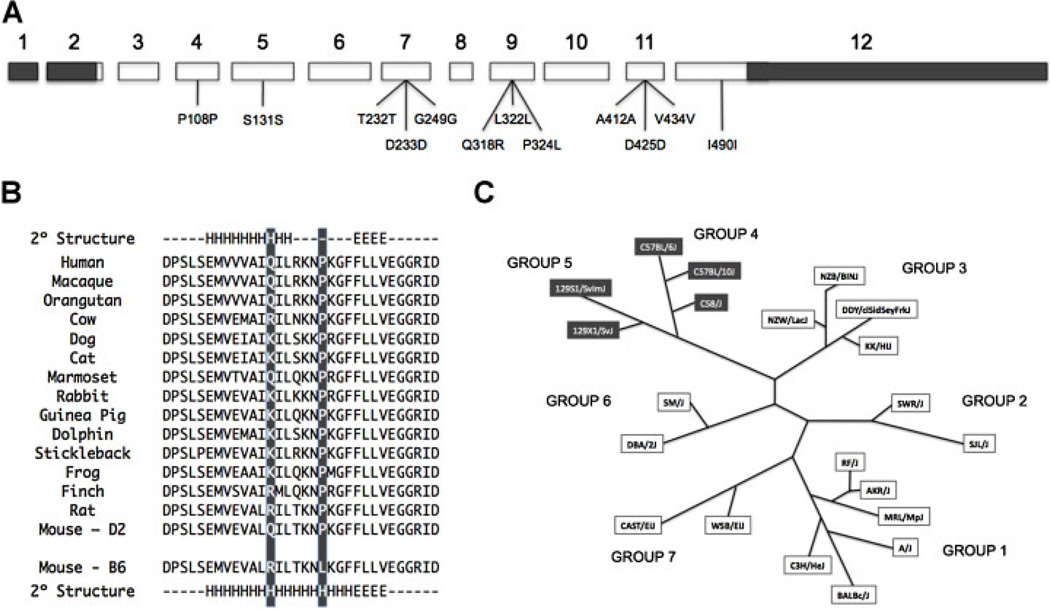Fig. 1.
Coding sequence variations in Alpl between B6 and D2 mice. (A) Exonic structure of Alpl. Open boxed regions indicate coding exons and 5′- and 3′-untranslated regions are represented by filled boxes. A total of 12 sequence variations between the B6 and D2 alleles were identified; two of which, residing within exon 9, are predicted to result in amino acid differences (Q318R and P324L). (B) Comparative sequence analysis of exon 9 of the homologous genes encoding tissue nonspecific ALP. There is evolutionary variability at the Gln318Arg site, but the proline corresponding to position 324 in murine Alpl is conserved in all vertebrates in which sequence is available, with the exception of the B6 inbred strain. Secondary structure modeling was performed with NNPredict.(28) “H,” a predicted helix element; “E,” a predicted beta strand element, or “-,” a predicted turn element. When present, the proline is predicted to prematurely disrupt an alpha-helix region. (C) Exon 9 of Alpl was sequenced from 21 laboratory mouse strains representing the seven phylogenetic divisions of the laboratory mouse family tree. The B6 haplotype (Gln 318/Leu 324) was limited to strains assigned to Groups 4 and 5 of the murine phylogenetic tree (highlighted), while the D2 haplotype was observed in the remaining five groups.

